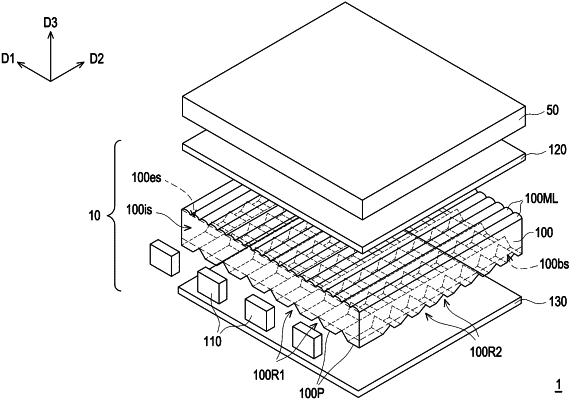| CPC G02B 6/0091 (2013.01) [G02B 6/0016 (2013.01); G02B 6/003 (2013.01); G02B 6/0038 (2013.01)] | 11 Claims |

|
1. A light condensing light guide plate, comprising:
a light emitting surface;
a bottom surface, disposed opposite to the light emitting surface;
a light incident surface, connected between the light emitting surface and the bottom surface;
a plurality of protrusion structures, disposed on the bottom surface, wherein the protrusion structures comprise two side surfaces, and the protrusion structures are disposed along a first direction and extend toward a second direction, the first direction is perpendicular to the second direction, the second direction is perpendicular to the light incident surface, each of the protrusion structures comprises a light condensing angle along the first direction, the light condensing angle ranges from 10 degrees to 40 degrees, and the light condensing angle is an angle range corresponding to a half-height width of a light emission distribution of each of the protrusion structures; and
a plurality of grooves, disposed in the protrusion structures of the light condensing light guide plate, wherein the grooves are disposed along the second direction and extend toward the first direction, the grooves are connected to the corresponding side surfaces, the protrusion structures comprise a light receiving surface that defines each of the grooves and is closer to the light incident surface, and an angle between the light receiving surface and the bottom surface ranges from 35 degrees to 65 degrees.
|